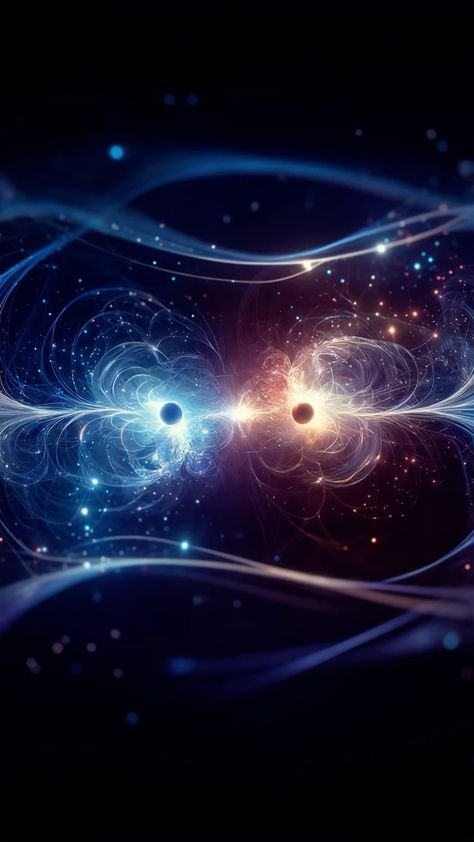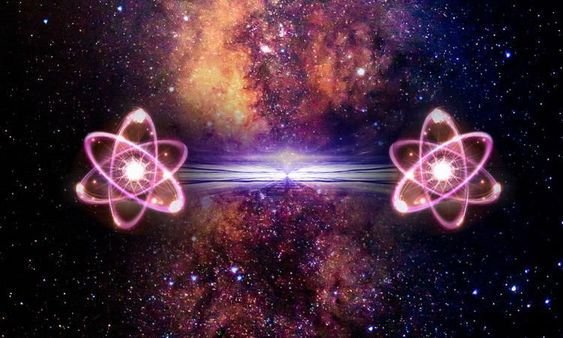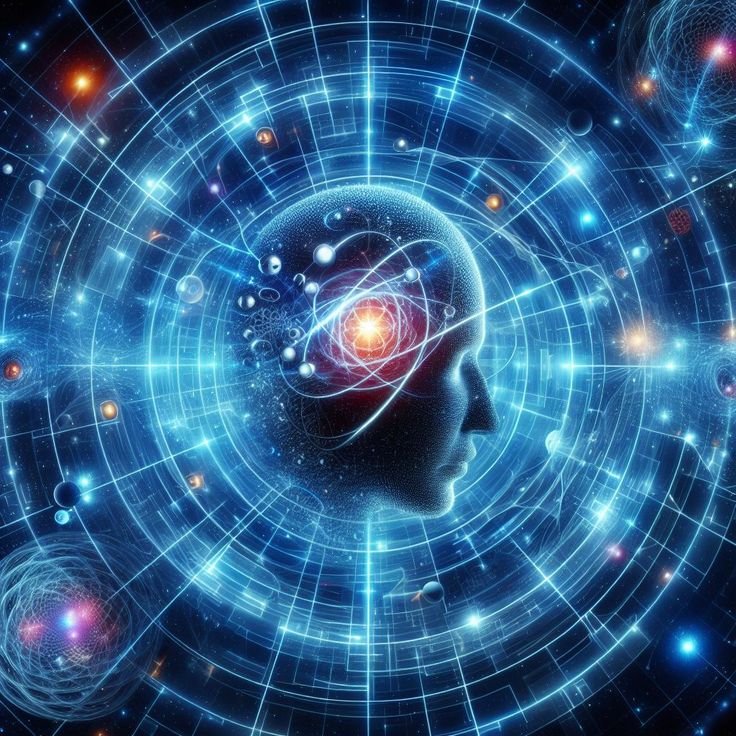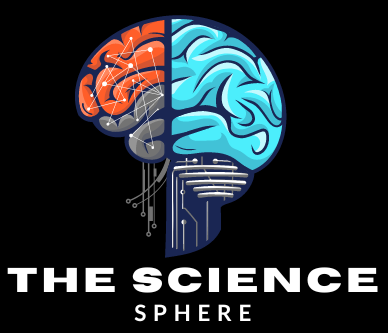In the grand tapestry of the universe, where particles dance in symphony and galaxies twirl across the cosmos, there lies a strange and mind-boggling phenomenon that has fascinated scientists, philosophers, and curious minds for over a century: quantum entanglement. It sounds like something straight out of science fiction, but quantum entanglement is not just theoretical—it’s a real, observable aspect of the subatomic world that challenges our very understanding of reality itself.

What Is Quantum Entanglement?
Quantum entanglement occurs when two or more particles, such as photons, electrons, or even atoms, become linked in such a way that their properties are interdependent, no matter how far apart they are. The bizarre part? A change in one particle’s state instantly affects the other particle(s), even if they are light-years apart! This phenomenon was famously referred to by Albert Einstein as “spooky action at a distance,” and for good reason.
Imagine this: two entangled particles are created in a lab and separated by vast distances—one stays on Earth, and the other is sent to a space station millions of kilometers away. If you measure the state of one particle, the other particle will immediately “respond” in a matching way, no matter the distance between them. It’s as if the particles are communicating faster than the speed of light. According to Einstein’s theory of relativity, nothing can travel faster than light. Yet, quantum entanglement appears to break that rule. This is just one of the paradoxes that has left scientists scratching their heads for decades.
The Strange Reality of Quantum Mechanics
At its core, quantum mechanics is the science that governs the behavior of particles at the smallest scales. It’s a world that is radically different from our everyday experiences. In the quantum realm, particles can exist in multiple states at once, a concept known as superposition. A single particle can be in two places at the same time, or have two different energies simultaneously, until it is measured. It’s only when observed that the particle “chooses” a specific state.
This idea of entanglement takes things even further. Once particles become entangled, they are no longer independent of each other. It’s as if their fates are intertwined, creating an instantaneous connection across space and time. This entanglement transcends classical concepts of cause and effect, and hints at a deeper level of reality—one where time, space, and locality are far more flexible than we can comprehend.

Real-World Applications of Quantum Entanglement
While quantum entanglement may sound like pure science fiction, it has some very real and fascinating applications. Scientists have harnessed entanglement for cutting-edge technologies that could reshape the future.
- Quantum Computing: Entanglement is one of the key principles behind quantum computing, a revolutionary technology that promises to solve complex problems far faster than classical computers. By using entangled quantum bits (qubits), quantum computers can perform calculations simultaneously, unlocking an entirely new world of computational power. This could have enormous implications for fields ranging from cryptography to artificial intelligence.
- Quantum Cryptography: Another promising application of entanglement is quantum cryptography, which uses the principles of quantum mechanics to create ultra-secure communication systems. Since any attempt to measure or observe entangled particles inevitably changes their state, it’s nearly impossible for hackers to intercept quantum information without being detected. This could provide unbreakable encryption and change the future of cybersecurity.
- Quantum Teleportation: In the realm of science fiction, teleportation is a classic concept. But in the world of quantum mechanics, it’s a reality—sort of. Quantum teleportation refers to the process of transferring quantum states (but not matter itself) between entangled particles. While it’s still in its infancy, this phenomenon could one day enable the instantaneous transfer of information across vast distances, bypassing the limits of traditional communication systems.

A Mind-Bending Challenge to Our Reality
Perhaps the most astonishing aspect of quantum entanglement is how it forces us to rethink the very nature of reality. In the entangled world, the concept of “locality” breaks down. Information about one particle can be transferred to another particle instantaneously, regardless of the distance between them. The universe, it seems, has a deep, hidden interconnectedness that we are only beginning to understand.
Does this mean that reality is more malleable and interconnected than we ever thought possible? Could it suggest that the boundaries of space and time are not as rigid as we’ve always believed? These questions remain at the heart of ongoing research, and with each new experiment, we edge closer to unlocking some of the most profound secrets of the universe.
Conclusion: Embracing the Uncertainty
Quantum entanglement is a stunning reminder of how much we still have to learn about the universe. It challenges our perceptions of space, time, and reality itself. It shows us that the microscopic world operates on a set of rules so bizarre that they defy our intuition, and it invites us to explore a deeper layer of existence beyond the limits of human understanding.
So, the next time you look up at the stars or ponder the mysteries of the universe, remember: quantum entanglement is just one of the many wonders that science is uncovering. It’s a reminder that, in the grand scheme of things, the universe is far stranger—and more beautiful—than we can even begin to imagine.






